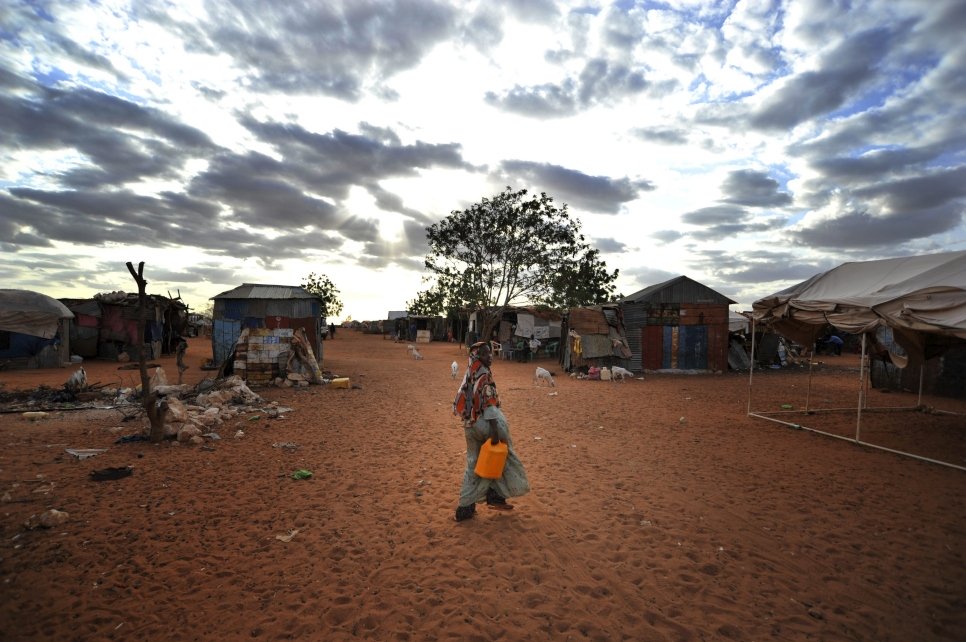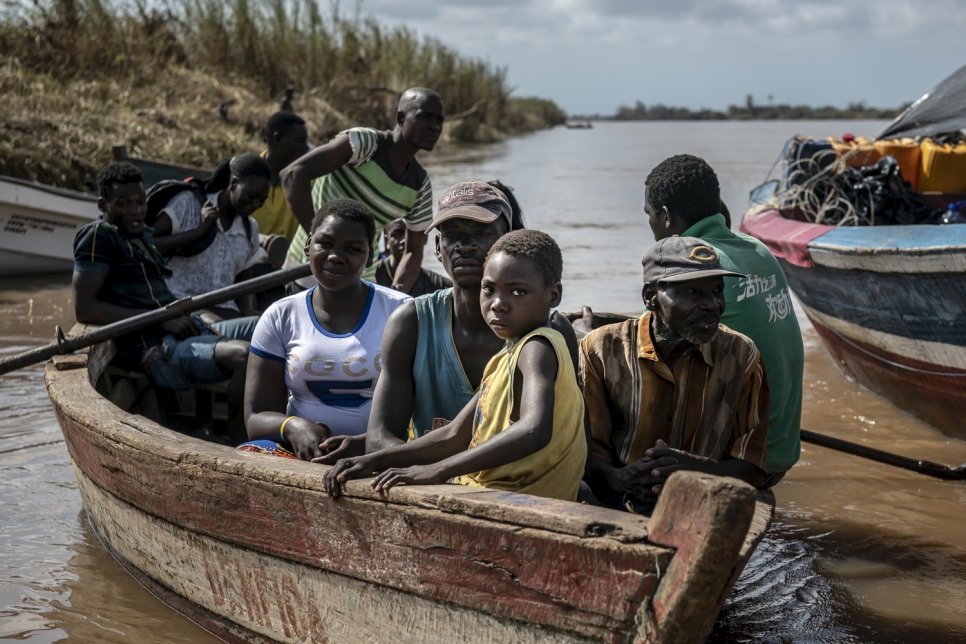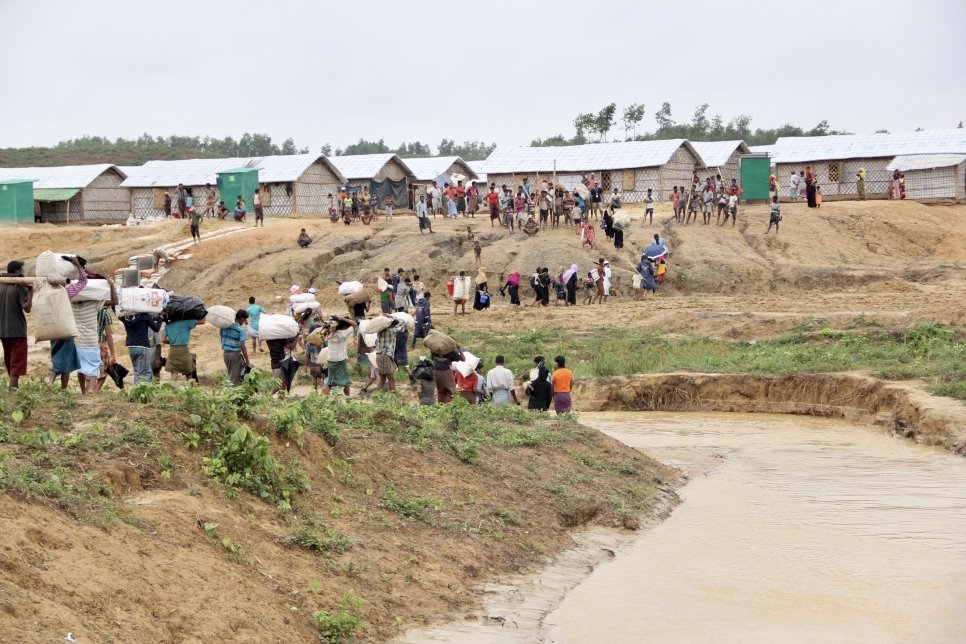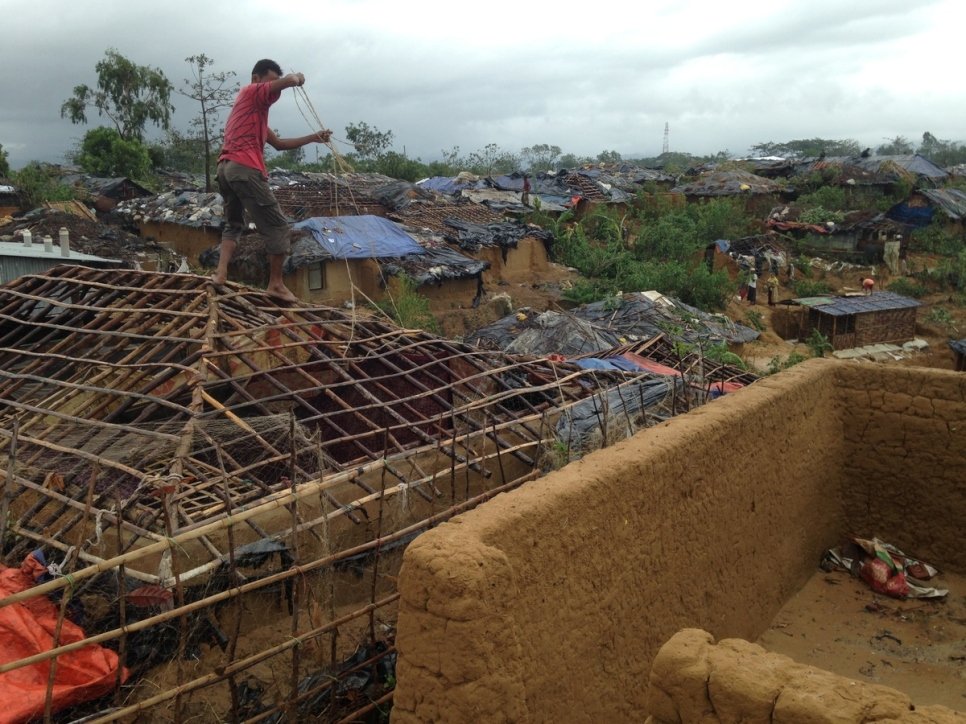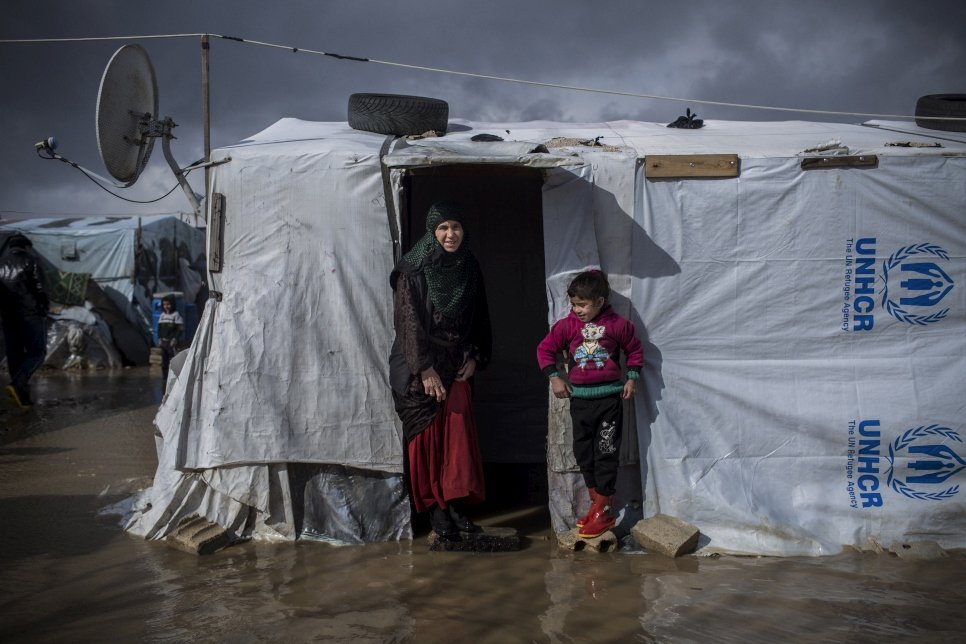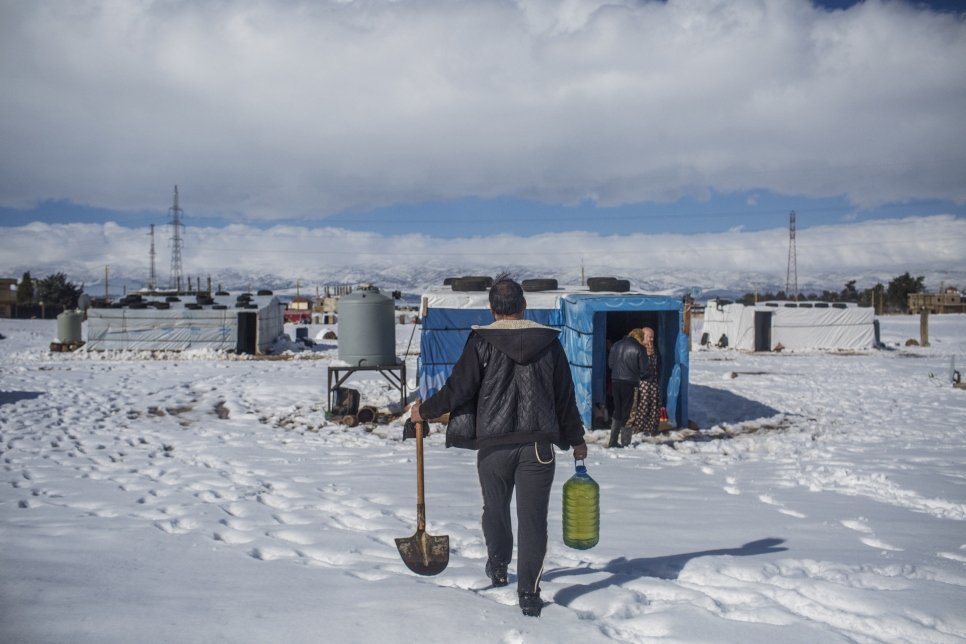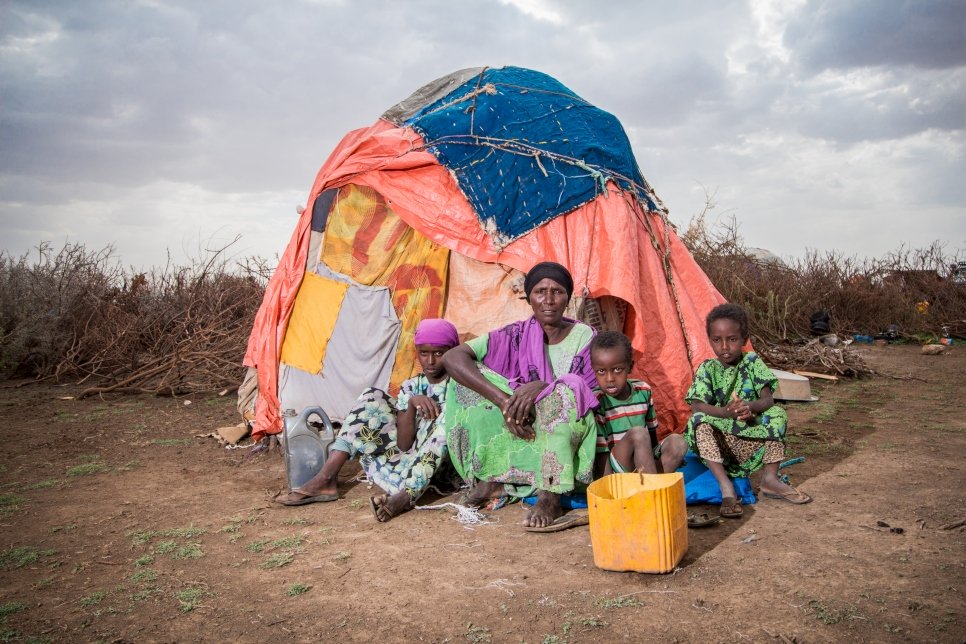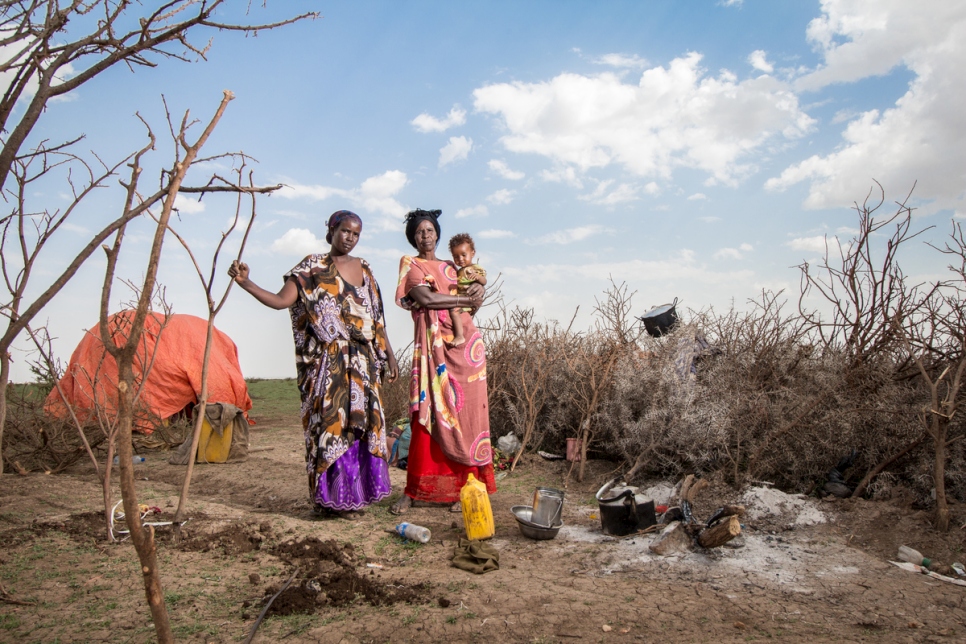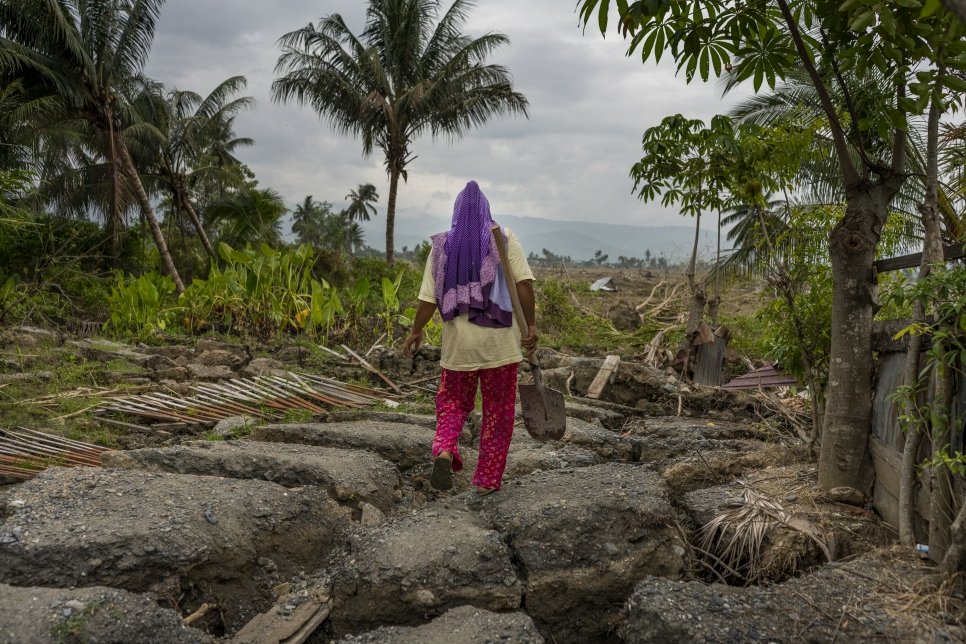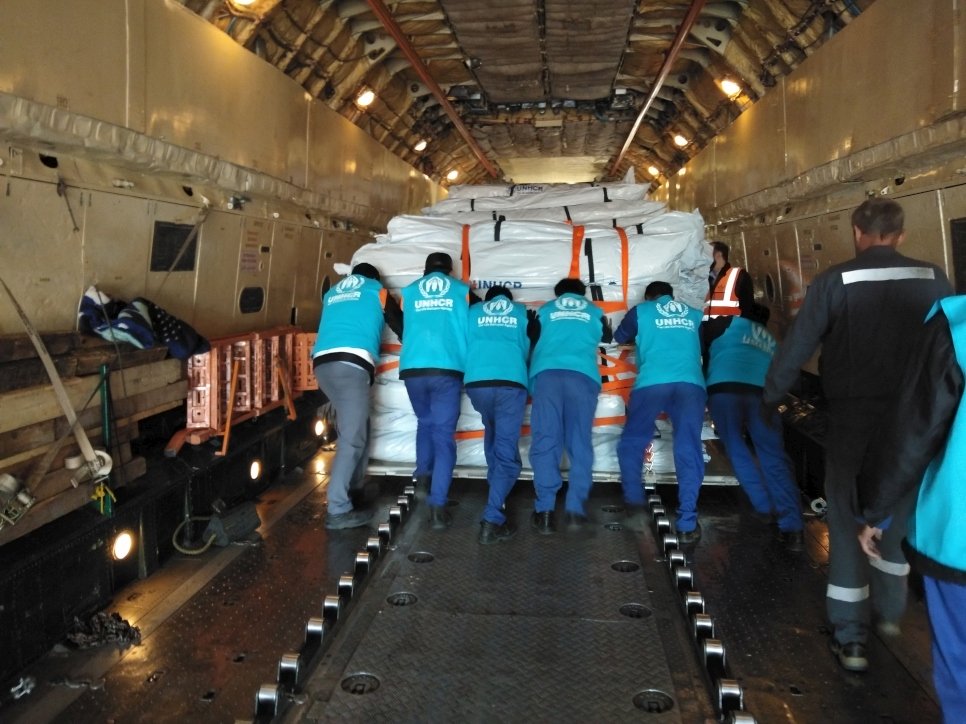Climate change and disaster displacement
The impacts of climate change are numerous. Limited natural resources, such as drinking water, are likely to become even scarcer in many parts of the world. Crops and livestock struggle to survive in climate change ‘hotspots’ where conditions become too hot and dry, or too cold and wet, threatening livelihoods and exacerbating food insecurity.
People are trying to adapt to the changing environment, but many are being forcibly displaced from their homes by the effects of climate change and disasters, or are relocating in order to survive. New displacement patterns, and competition over depleted natural resources can spark conflict between communities or compound pre-existing vulnerabilities.
People displaced across borders in the context of climate change and disasters may in some circumstances be in need of international protection. Refugee law therefore has an important role to play in this area. UNHCR is providing protection and assistance for many people forcibly displaced by the effects of climate change and disasters, among other drivers, and is working to increase their resilience.
UNHCR’s role in addressing climate change and disaster-related displacement
UNHCR’s work on climate change and disaster displacement covers four main areas:
- Legal advice, guidance and the development of norms to support the enhanced protection of the rights of people displaced in the context of disasters and climate change.
- Promoting policy coherence to ensure that issues of disaster displacement are effectively mainstreamed across relevant areas.
- Research to fill gaps that underpin this operational and policy work.
- Field-based activities to address internal and cross-border disaster displacement; to reduce the environmental impact of refugee settlements and ensure sustainable responses to displacement; risk reduction activities and others which may contribute to efforts to avert, minimize and address displacement.
Through its participation in global policy processes, UNHCR has played a pioneering role in raising awareness about climate change as a driver of displacement and the need to address protection for people displaced in the context of disasters.
In 2018, extreme weather events such as severe drought in Afghanistan, Tropical Cyclone Gita in Samoa, and flooding in the Philippines, resulted in acute humanitarian needs. According to the Internal Displacement Monitoring Centre, there were 18.8 million new disaster-related internal displacements recorded in 2017. Most disaster displacement linked to natural hazards and the impacts of climate change is internal, with those affected remaining within their national borders. However, displacement across borders also occurs, and may be interrelated with situations of conflict or violence.
In all cases, people displaced by disasters have needs and vulnerabilities that must be addressed. People already displaced for reasons other than disasters linked to natural hazards – including refugees, stateless people, and the internally displaced – often reside in climate change ‘hotspots’ and may be exposed to secondary displacement. Moreover, similar impacts on their home areas can inhibit their ability to safely return.
UNHCR plays a leading role in the Global Protection Cluster for protecting and assisting people who are forcibly displaced inside their countries and cannot return safely home. When called upon to intervene, can deploy emergency teams and provide concrete support in terms of registration, documentation, family reunification and the provision of shelter, basic hygiene and nutrition. UNHCR is also a standing invitee to the Steering Group of the Platform on Disaster Displacement, in follow-up to the Nansen Initiative on cross-border disaster displacement. The Platform on Disaster Displacement is a State-led initiative focused on the implementation of the Nansen Initiative’s Protection Agenda.
UNHCR has developed planned relocation guidance together with Georgetown University and other partners for the relocation of at-risk populations to protect them from disasters and the impacts of climate change while respecting their human rights. Furthermore, UNHCR has provided technical support to the United Nations Framework Convention on Climate Change process since 2008, including through the Advisory Group on Human Mobility and Climate Change, and in its role as a member of the Task Force on Displacement (TFD) mandated by the Executive Committee of the Warsaw International Mechanism on Loss and Damage.
In 2018, in the implementation of the Workplan of the TFD, UNHCR commissioned a mapping on existing international and regional guidance and tools on averting, minimizing, addressing and facilitating durable solutions to displacement related to the adverse impacts of climate change and contributed to the development of recommendations for integrated approaches to avert, minimize and address displacement linked to the adverse effects of climate change that were presented at COP24 and adopted by Parties. UNHCR remains committed to continue providing technical support to Parties in implementing the Paris Agreement, and to actively participating in the TFD under its renewed mandate.
‘Climate refugees’?
The term “climate refugee” is often used in the media and other discussions. However, this phrase can cause confusion, as it does not exist in international law. A “refugee” is defined as a person who has crossed an international border “owing to well-founded fear of being persecuted for reasons of race, religion, nationality, membership of a particular social group or political opinion” (1951 Convention relating to the Status of Refugees). In some contexts, the definition extends to persons fleeing “events seriously disturbing public order” (1969 OAU Convention; 1984 Cartagena Declaration). Climate change affects people inside their own countries, and typically creates internal displacement before it reaches a level where it displaces people across borders. There may be situations where the refugee criteria of the 1951 Convention or broader refugee criteria of regional refugee law frameworks may apply, for example if drought-related famine is linked to situations of armed conflict and violence – an area known as “nexus dynamics.” Regardless, the term “climate refugee” is not endorsed by UNHCR, and it is more accurate to refer to “persons displaced in the context of disasters and climate change.”
Nexus Dynamics
Recent history has borne witness to cross border movements in situations where conflict or violence has interacted with disaster or adverse effects of climate change. Yet, research on how destination States have used refugee law to provide international protection in these complex situations has traditionally been limited. To address this knowledge gap and to identify policy and practical solutions to strengthen the implementation of refugee law based international protection when cross-border movements occur in the context of nexus dynamics, in 2018 UNHCR undertook the study: In Harm's Way: International protection in the context of nexus dynamics between conflict or violence and disaster or climate change.
It examines the protection provided to people displaced across borders by countries of destination in specific situations in the Horn of Africa and the Americas, where conflict or violence interacted with climate change or disaster. A brief overview of the study, which sets out the scope, key observations and recommendations, is available in English, French and Spanish. The study’s findings build on UNHCR’s Legal considerations on refugee protection for people fleeing conflict and famine affected countries and indicate that refugee law frameworks can be applicable in situations where nexus dynamics are present. Nevertheless, there are still data and knowledge gaps in this area that need to be addressed.
Policy and normative development
- Key messages for COP25 23 Dec 2019
- Climate change and disaster displacement in the Global Compact on Refugees Mar 2019
- Key messages for COP24 30 Nov 2018
Research and studies
- COVID-19, displacement and climate change Jun 2020
- In Harm's Way: International Protection in the Context of Nexus Dynamics Between Conflict or Violence and Disaster or Climate Change Dec 2018
- UNHCR's Mapping of international and regional guidance and tools on averting, minimizing, addressing and facilitating durable solutions to displacement related to the adverse impacts of climate change Aug 2018
External links to partners
- Report of Excom Warsaw International Mechanism on Loss and Damage associated with Climate Change Impacts 2018
- COP24 Decision of Excom Warsaw International Mechanism on Loss and Damage associated with Climate Change Impacts
- IDMC Global Report on Internal Displacement 2018
- WMO Statement on the State of the Global Climate in 2018
- Women on the move in a changing climate - Sierra Club
- "Nowhere to go" on the front lines of climate change - IRIN
- Platform on Disaster Displacement website
- Refword - Documents and Reports
- Communicating the Complexity of Displacement in a Changing Climate

